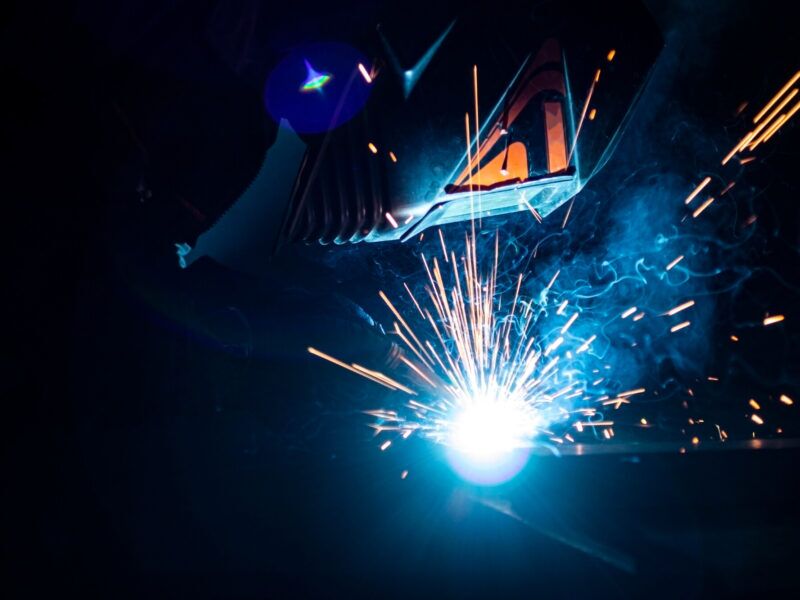Expert Strategies for Preventing Weld Undercut Efficiently
Expert Strategies for Preventing Weld Undercut Efficiently
Blog Article
Recognizing the Causes and Solutions for Undercut Welding in Steel Manufacture Procedures
In the world of steel manufacture procedures, the event of undercut welding poses a substantial obstacle that requires a thorough understanding of its reasons and sensible solutions. The intricate interplay of numerous variables throughout welding operations can lead to this undesirable phenomenon, influencing the architectural honesty and total high quality of the welded joints - Preventing weld undercut. By exploring the root triggers of undercut welding and checking out efficient restorative steps, fabricators can boost the criterion of their handiwork and make sure the production of flawless metal components
Usual Reasons For Undercut Welding
Often forgotten in metal fabrication, undercut welding happens due to numerous aspects that require thorough interest and expertise to be efficiently alleviated. In addition, inappropriate welding strategies, such as using the wrong welding angle or take a trip rate, can additionally contribute to undercut formation. The choice of welding parameters, such as voltage, current, and wire feed speed, plays a considerable duty in the event of undercut welding.
Impact of Incorrect Welding Parameters
Inaccurate welding parameters can considerably jeopardize the stability and high quality of welded joints in metal fabrication processes. The impact of incorrect welding parameters manifests in numerous means, bring about architectural weak points and flaws in the welded components. One essential facet influenced by incorrect welding specifications is the penetration depth of the weld. Not enough warm input because of low welding currents or exceedingly high travel rates can lead to insufficient fusion in between the base steels, resulting in incomplete joint infiltration and deteriorated bonds. On the other hand, extreme warm input triggered by high welding currents or slow traveling speeds can lead to too much and burn-through reinforcement, creating a weak and unsteady weld structure. Additionally, wrong specifications such as improper voltage setups or incorrect electrode angles can contribute to irregular weld bead accounts, lack of fusion, and boosted chances of issues like damaging. As a result, meticulous focus to welding parameters is extremely important to make sure the production of high-grade welds with the desired mechanical residential properties and structural honesty.
Effect of Improper Torch Angle
Improper torch angle in welding operations can substantially influence the top quality and stability of the final weld joints in steel fabrication processes. The lantern angle plays an important function in identifying the warmth input and distribution throughout welding. When the lantern angle is wrong, concerns such as damaging can emerge. Damaging is an usual welding issue where a groove creates along the weld toe, compromising the joint and compromising its structural honesty.
A lantern angle that is also steep can cause inadequate penetration, incomplete blend, and raised spatter. On the various other hand, a torch angle that is too shallow can cause too much penetration, burn-through, and distortion of the base material. Preventing weld undercut. Correct lantern angle is necessary for making sure constant weld quality, toughness, and look
To stop undercutting and various other flaws triggered by improper lantern angles, welders should be trained to maintain the right torch angle throughout the welding procedure. Routine monitoring and change of torch angles throughout welding can assist achieve audio welds with minimal issues.
Duty of Inadequate Welding Strategies

An additional facet of poor welding strategies is inappropriate weld prep work. Insufficient cleansing of the base metals, inaccurate joint design, or insufficient edge preparation can all add to damage welding. Insufficient protecting gas coverage or using the incorrect kind of gas can result in insufficient combination and the formation of undercut issues.
To resolve the duty of insufficient welding methods in metal manufacture processes, it is vital to give detailed training for welders. Proper weblink education and learning on welding criteria, joint prep work, and protecting gas option can assist avoid undercut welding and ensure premium welds in metal fabrication tasks.
Efficient Solutions for Undercut Welding
Attending to undercut welding in metal manufacture requires carrying out effective remedies to improve weld quality and architectural integrity. Among the primary remedies to fight undercut is to readjust welding specifications such as voltage, existing, and travel rate to guarantee proper warm input and blend. By fine-tuning these settings, welders can protect against extreme melting of the base steel and filler material, minimizing the likelihood of undercut development.
Additionally, appropriate joint prep work is essential in stopping undercut. Guaranteeing tidy base steel surfaces without contaminants and utilizing the ideal bevel angle can help promote far better weld infiltration and decrease the danger of undercut - Preventing weld undercut. Using appropriate welding strategies, such as oscillating the torch or weaving, can additionally aid in distributing warm equally and loading the weld joint effectively, decreasing the possibility of undercut problems
Moreover, picking the appropriate welding consumables, consisting of electrodes and filler steels, is essential in reducing undercut. Utilizing products with ideal chemical compositions and mechanical properties can add to achieving sound welds with minimal undercut. Regular evaluation and quality assurance procedures must additionally be applied to identify and address undercut issues promptly, ensuring the overall integrity of fabricated steel parts.

Conclusion
In verdict, recognizing the reasons and options for undercut welding in metal construction processes is essential for achieving top quality welds. By addressing usual reasons such as inaccurate welding specifications, improper lantern angle, and poor welding methods, welders can avoid undercutting and ensure solid, long lasting welds. It is important to take notice of these factors and apply reliable services to improve the total welding process and final item high quality.

Report this page